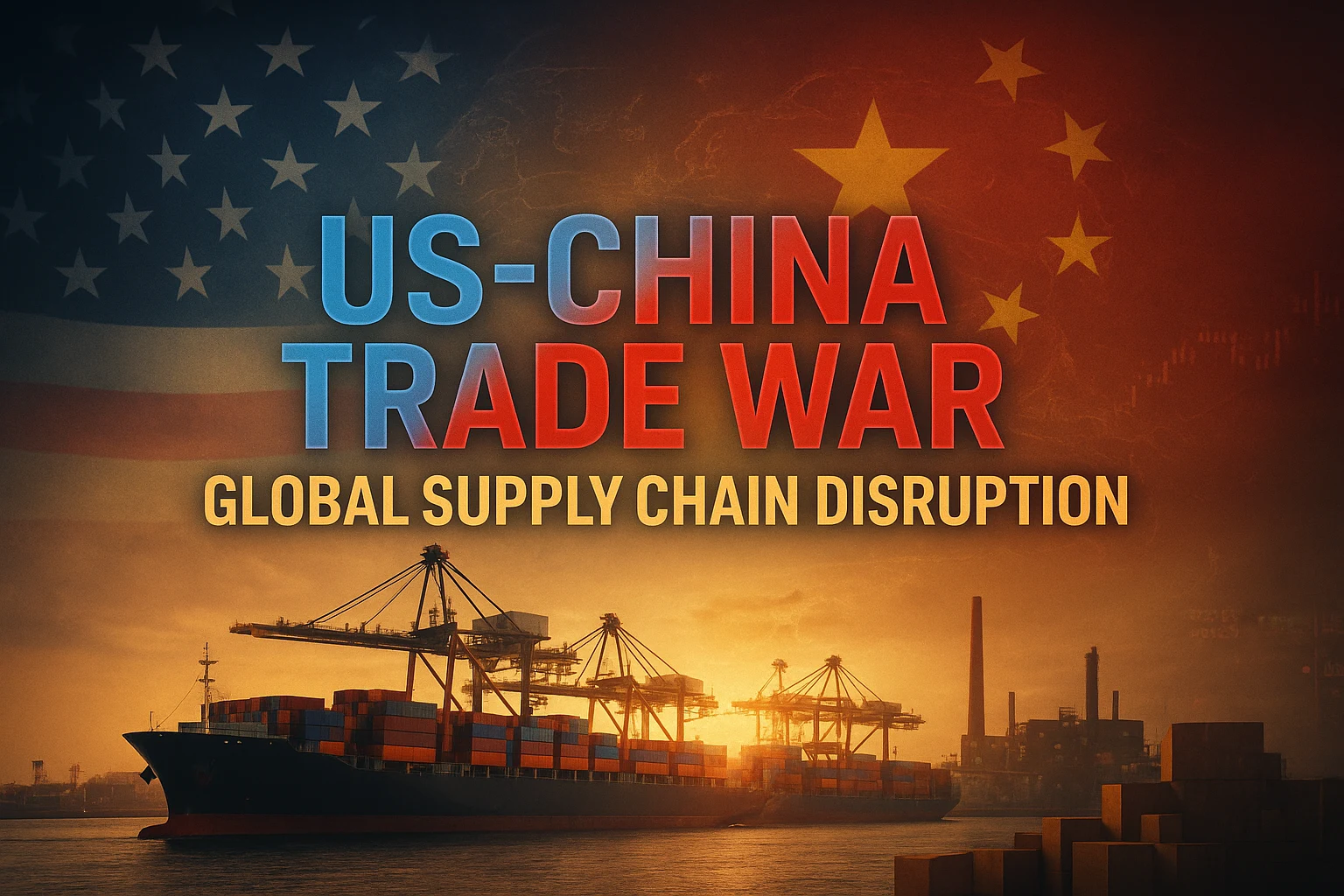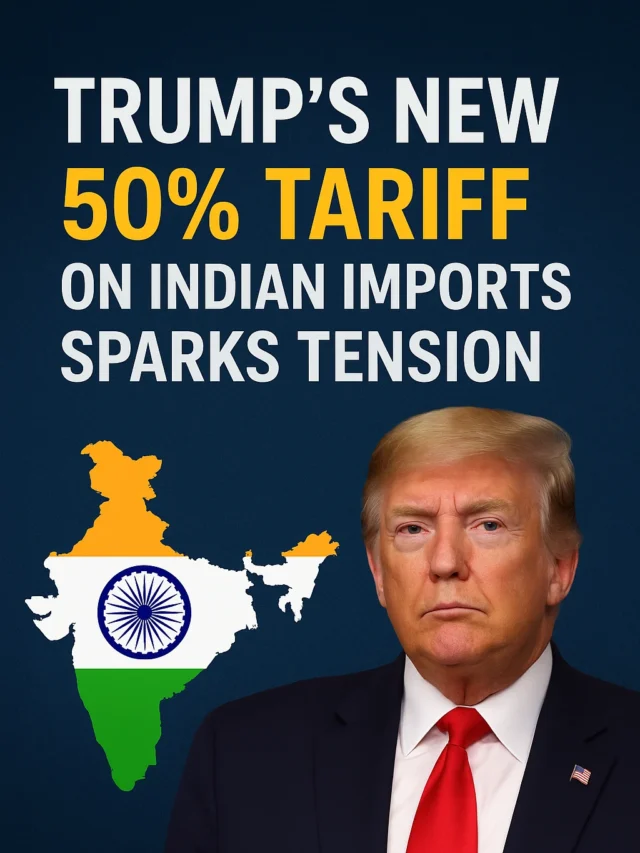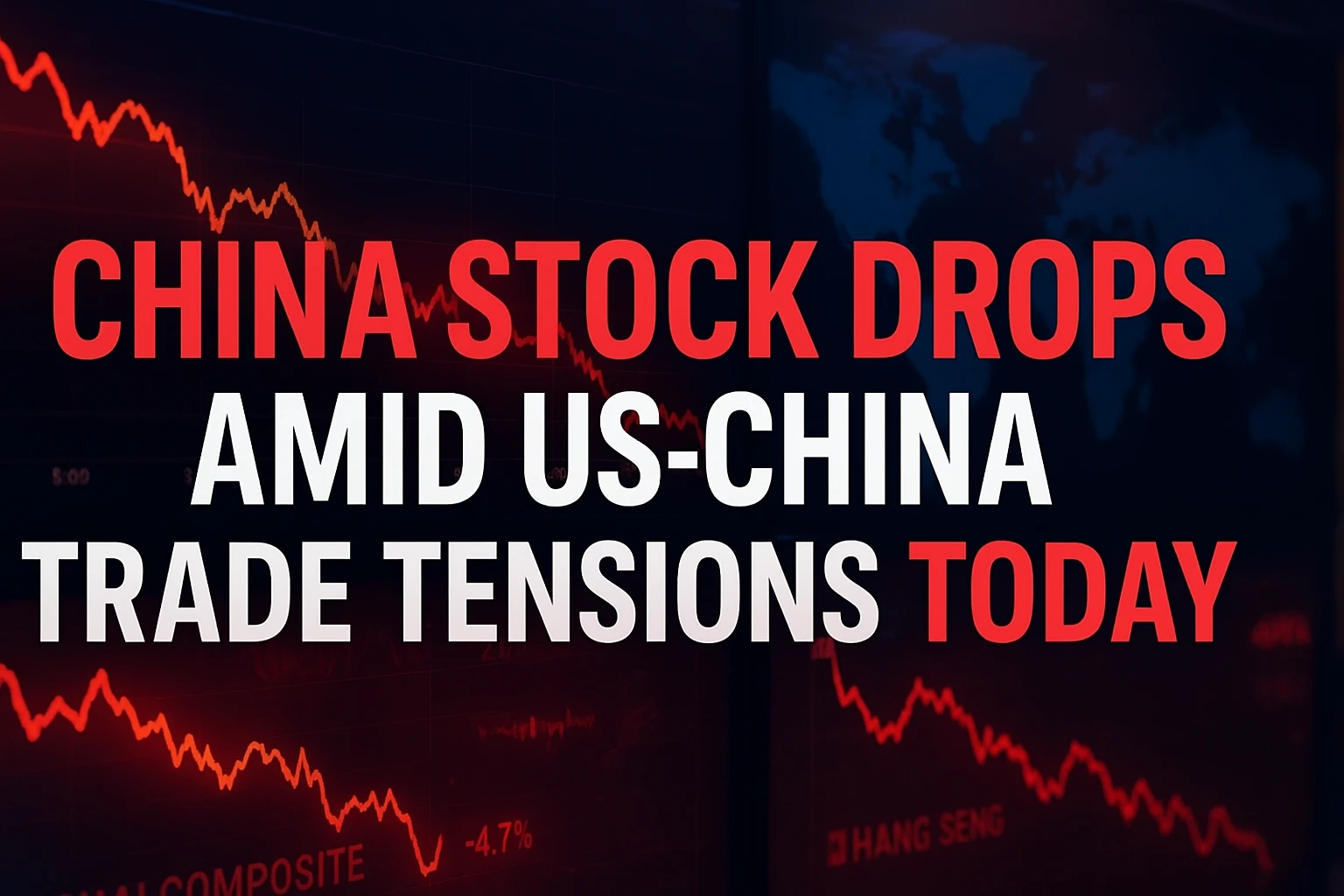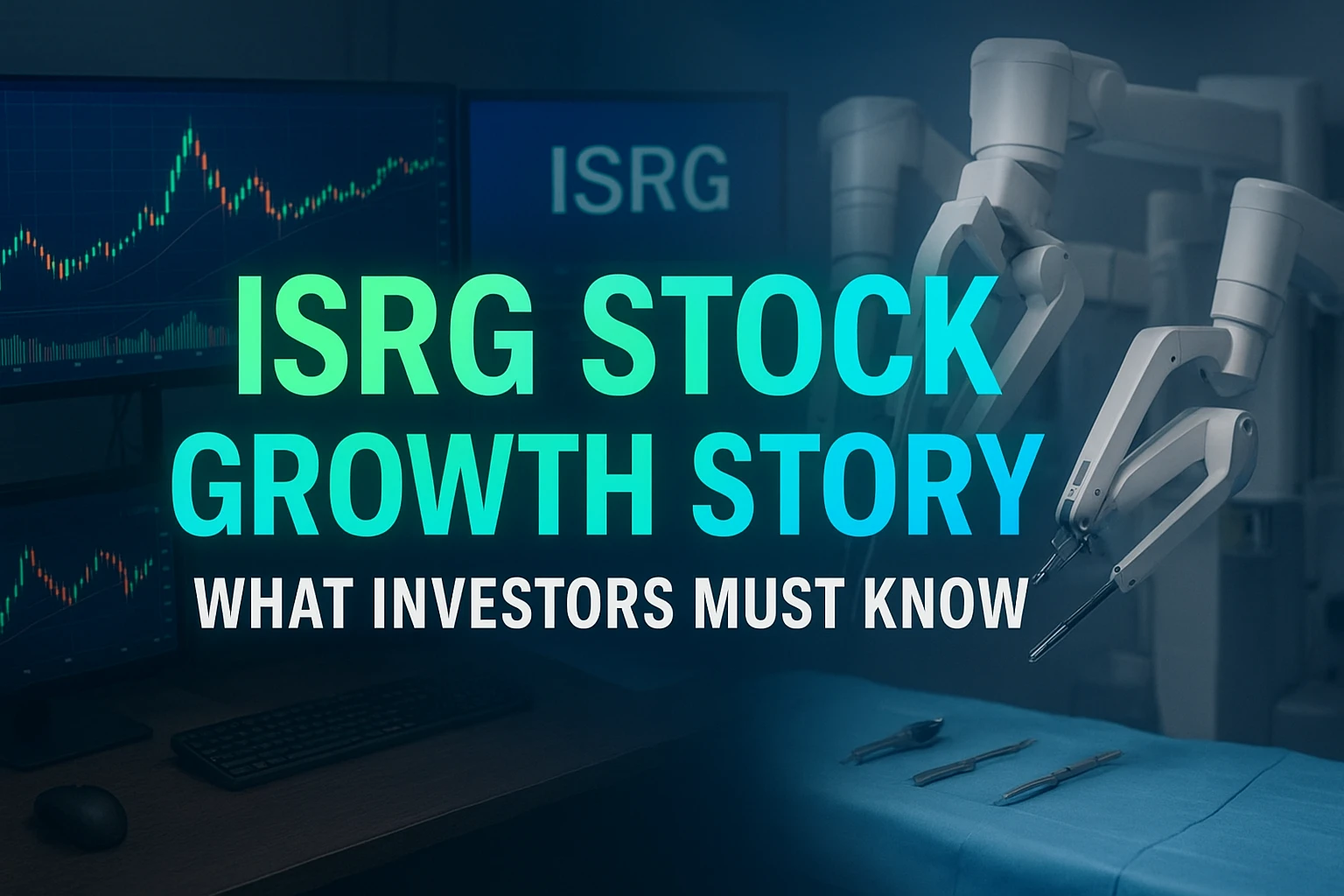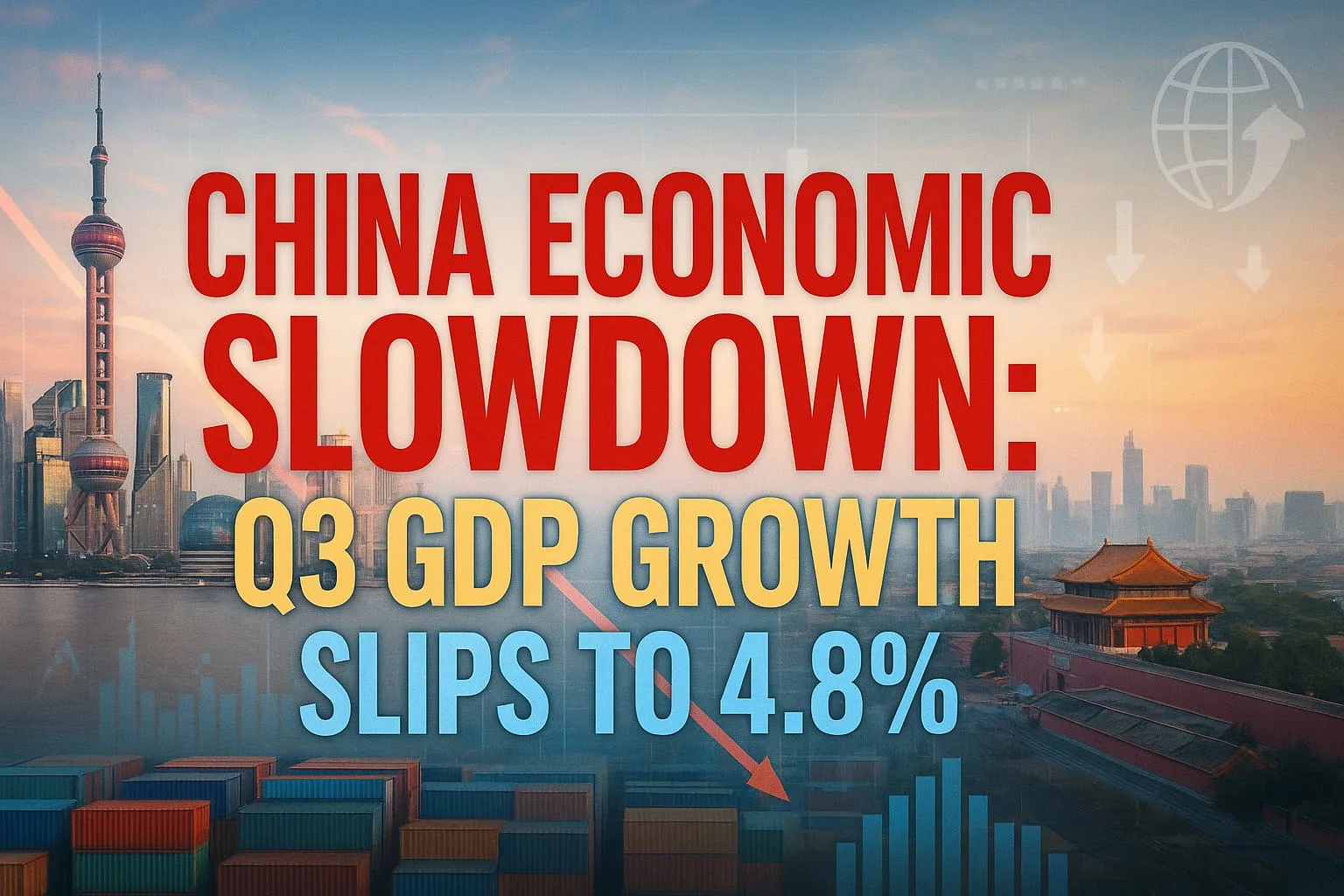In today’s world, trade is no longer just an exchange of goods; it is deeply intertwined with politics, technology, and strategy. The US-China trade war is a prime example of this, affecting not only the economies of both countries but also disrupting the global supply chain. This conflict is no longer limited to taxes or tariffs; it has become a “battle for economic power,” the impact of which is being felt by every country and every industry.
When the US began imposing high tariffs on goods imported from China in 2018, perhaps no one imagined the impact would be so widespread. China also increased taxes on American products in response. This escalated trade tensions, and gradually this conflict extended into the technological sphere. Particularly in areas like semiconductors, 5G, and artificial intelligence, this competition has now become a fully strategic one. The US-China trade war has now become a kind of “tech war.”
🇺🇸⚔️ US–China Trade War Highlights
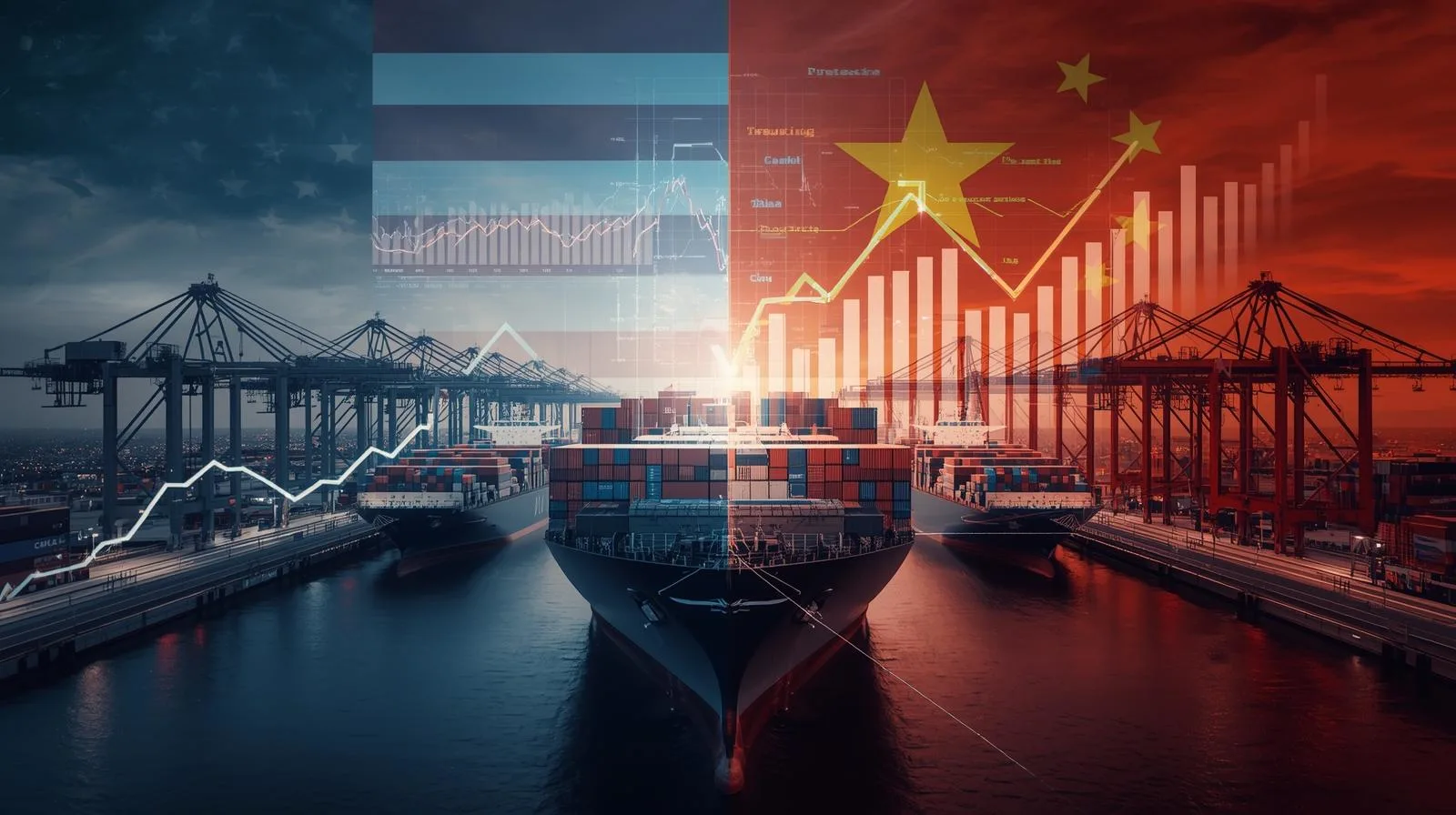
- 📅 2018: The US began imposing heavy tariffs on goods imported from China.
- 🇨🇳 In response, China increased taxes on American products.
- ⚠️ The back-and-forth tariff war escalated trade tensions between the two nations.
- 🌐 Over time, this conflict expanded from trade to technology.
- 💻 Key sectors impacted: Semiconductors, 5G, and Artificial Intelligence.
- ⚙️ The US–China trade conflict has now turned into a “Tech War.”
Global trade rivalry reshaping the world’s economic landscape.
This conflict has had a significant impact on global supply chains. While previously, most of the world’s products were manufactured in China and shipped to the US and other countries, many major companies are now taking steps to reduce this dependence. Companies like Apple, Dell, and Samsung are establishing manufacturing bases in countries like India, Vietnam, and Mexico. This is called the “China Plus One” strategy—that is, having the option of producing in another country alongside China. This reduces risk and reduces complete dependence on any one country.
But this change also comes at a significant cost. Companies are having to establish new supply chains, invest in new factories, and understand the policies of new countries. This has directly impacted production costs. When companies’ costs increase, the burden ultimately falls on consumers. This is why the prices of electronic goods, steel, and consumer products in the US market have become more expensive than before.
On the other hand, China has also suffered losses due to this US-China trade war. Many foreign companies began shifting production from China, impacting employment and exports. However, China has attempted to strengthen its internal demand and increase trade with other Asian countries. It is also clear that completely losing the US market is not easy for any country.
Globally, this trade conflict has accelerated the process of deglobalization. While the world was previously moving toward “globalization,” i.e., interdependence, countries are now attempting to secure their own production and technological systems. This is a form of “economic decoupling”—that is, economies moving in different directions.
For some countries, this situation has become a new opportunity. Countries like India, Vietnam, Indonesia, and Mexico have turned this situation to their advantage. These countries are rapidly attracting foreign investment, creating new jobs and production centers. Meanwhile, the United States is also emphasizing its “Made in America” policy, ensuring that essential goods like semiconductors and medical equipment are produced domestically. Overall, this can be considered a positive aspect of the US-China trade war, as it is leading to the emergence of new manufacturing hubs around the world.
🌎 Global Opportunities from US-China Trade War
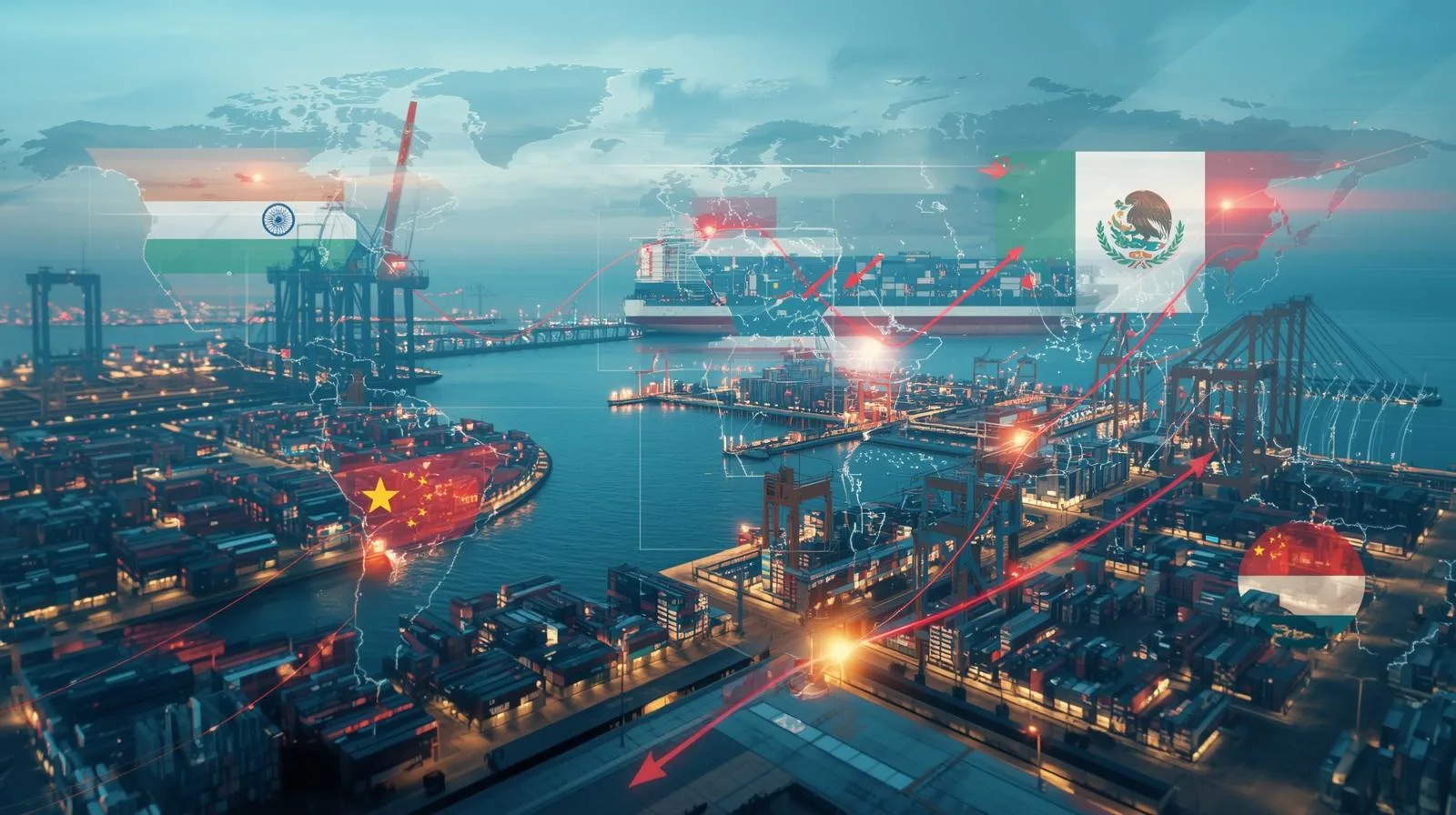
- 🌟 Some countries have turned the US-China trade tensions into new opportunities.
- 🇮🇳🇻🇳🇮🇩🇲🇽 Countries like India, Vietnam, Indonesia, and Mexico are attracting foreign investment rapidly.
- 💼 New jobs and production centers are emerging in these countries.
- 🇺🇸 The United States is focusing on its “Made in America” policy to produce essential goods like semiconductors and medical equipment domestically.
- 🌐 Overall, this is a positive outcome of the trade war, leading to new manufacturing hubs worldwide.
Global trade is shifting, creating opportunities across continents.
However, it is also true that trade tensions are never a good sign for global stability. When two of the largest economies clash, the impact is felt everywhere—whether it’s the European economy or the currency markets of Asia. The economies of many smaller countries depend on both the US and China, and when tensions escalate, they are caught in the middle.
It’s difficult to predict the direction this US-China trade war will take in the coming years. But one thing is certain: global supply chains will never be the same. Companies are now more cautious, governments are thinking strategically, and consumers must now adapt to the fact that prices and availability of products also depend on geopolitical circumstances.
Finally, it’s important to understand that this trade conflict isn’t just about the US and China. It’s affecting the economic balance of the entire world. The US-China trade war has taught us that no country’s economy can function in isolation—every decision impacts the rest of the world. Therefore, in the future, it will be crucial for countries to focus more on cooperation than confrontation, because if this trade war continues for a long time, everyone—whether producers or consumers—will suffer the consequences.


